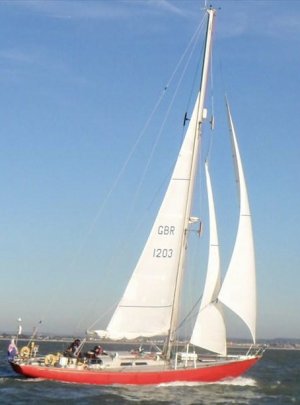Refueler
Well-Known Member
Once 2 tucks are in the main you can tension both runners. I love a fractional rig, the biggest sail, with a bit of metal on two sides, small headsails and kites. tweeky rig. What's not to like? Apart from the naysayers who only experience is with a masthead tree trunk.
Now I have to love this post !!
I have to admit that I was never a real fan of running stays ... but I am getting to appreciate them on my latest boat.
I've stood on various parts of the deck - looked at mast from many angles and imagined with / without them ... so far - all observations on my boat that is .. supports having them.




